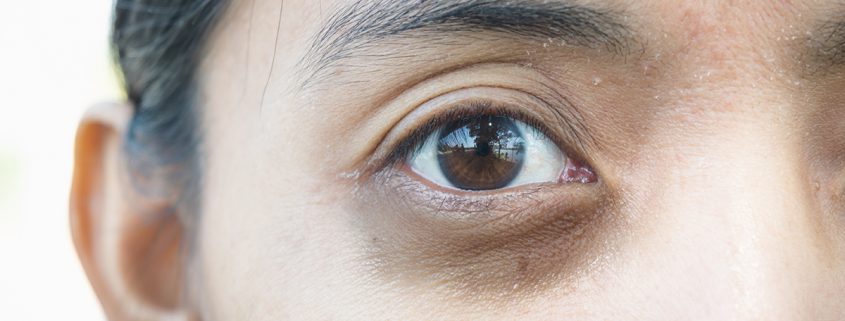Dark Undereye Circles: Causes and Risk Factors
Troubled by the noticeable dark circles under your eyes do not seem to go away even after getting a good night’s sleep? Dark undereye circles (also called periorbital dark circles) are common concerns among many adults. They are not dangerous to your health, but they can make you look old, sick, and tired, which can affect your self-esteem and body image.
What’s to blame?
There are various factors that contribute to undereye darkness, including genetics, age, lifestyle, and illnesses.
Genetics and Aging
The skin under your eyes is thinner compared to other areas of your body, making its blood vessels more visible to the naked eye. When the skin loses more collagen and elasticity due to skin aging, the dark circles become more prominent.
Periorbital hyperpigmentation, which happens when the skin around your eyes produces more melanin than normal, also leads to the formation of dark circles. The hyperpigmentation, which is more common in people with darker skin, is usually brown in color.
Lifestyle
Fatigue, stress, and lack of sleep can worsen dark circles. Without enough rest, your skin becomes paler, making its blood underneath more visible.
Overexposure to the harmful rays of the sun can also increase dark circles by breaking down collagen and elastin.
Health Issues
Dark circles can be triggered by certain health conditions, including periorbital hyperpigmentation, which happens when the skin around your eyes produces more melanin than normal; anemia (iron deficiency), which limits oxygen supply to the tissues around the eyes, leading to discoloration; and allergies, which triggers the release of histamines in the body that inflame blood vessels and cause swelling. The itching reaction from allergies can also cause you to rub or scratch your skin, which eventually darkens it.
If you are taking any medications that cause blood vessels to dilate, dark circles may also appear as the increased blood flow shows through your skin.
Blood Leakage
In certain cases, the blood vessels around the eyes may leak and the oxidation of the leaked blood can result in undereye darkness. Usually, swelling and bags also appear as leaked blood is affected by gravitation pull.
Identifying the root cause
To determine the possible cause of your stubborn dark circles, try gently stretching the skin under your eyes. If it becomes darker, the circles are probably due to genetics or aging but if the color doesn’t change, it can be due to sun exposure or allergies. For a more accurate explanation, however, it is always best to consult with a doctor.
Shinagawa Aesthetics Center offers free consultation for all skin concerns. For details and appointment request, visit Shinagawa.PH.
Want to know the best treatments for your dark undereye circles? Click here for the second part of this blog series.




Ask qoh lng how much mag pa remove ng dark undereye?
Hello. Great read. Do you think glutathione helps?
Informative article. This article throws light on some useful information. You mentioned the best ways to deal with common eye conditions. Thanks for sharing.